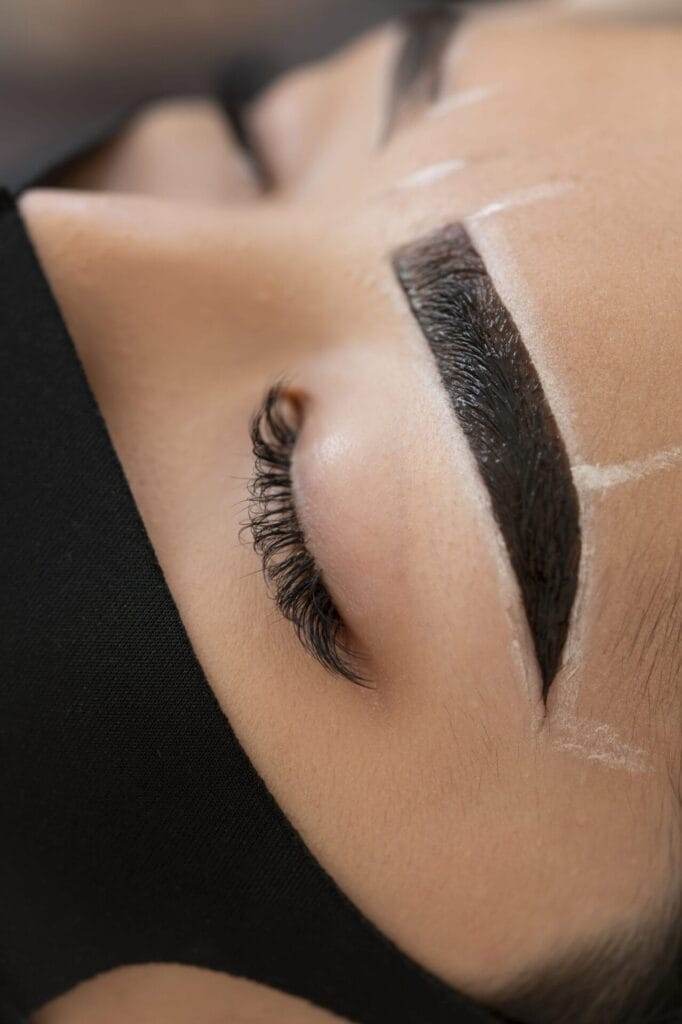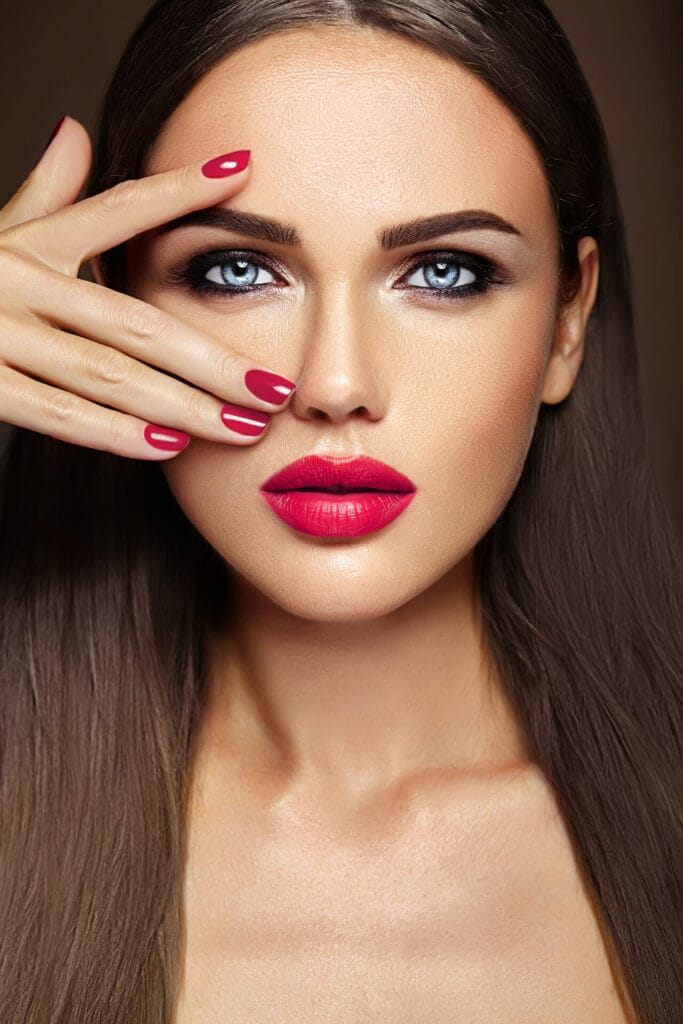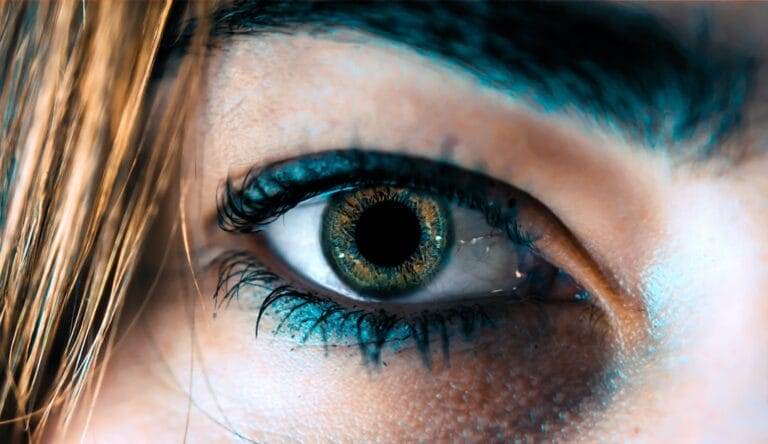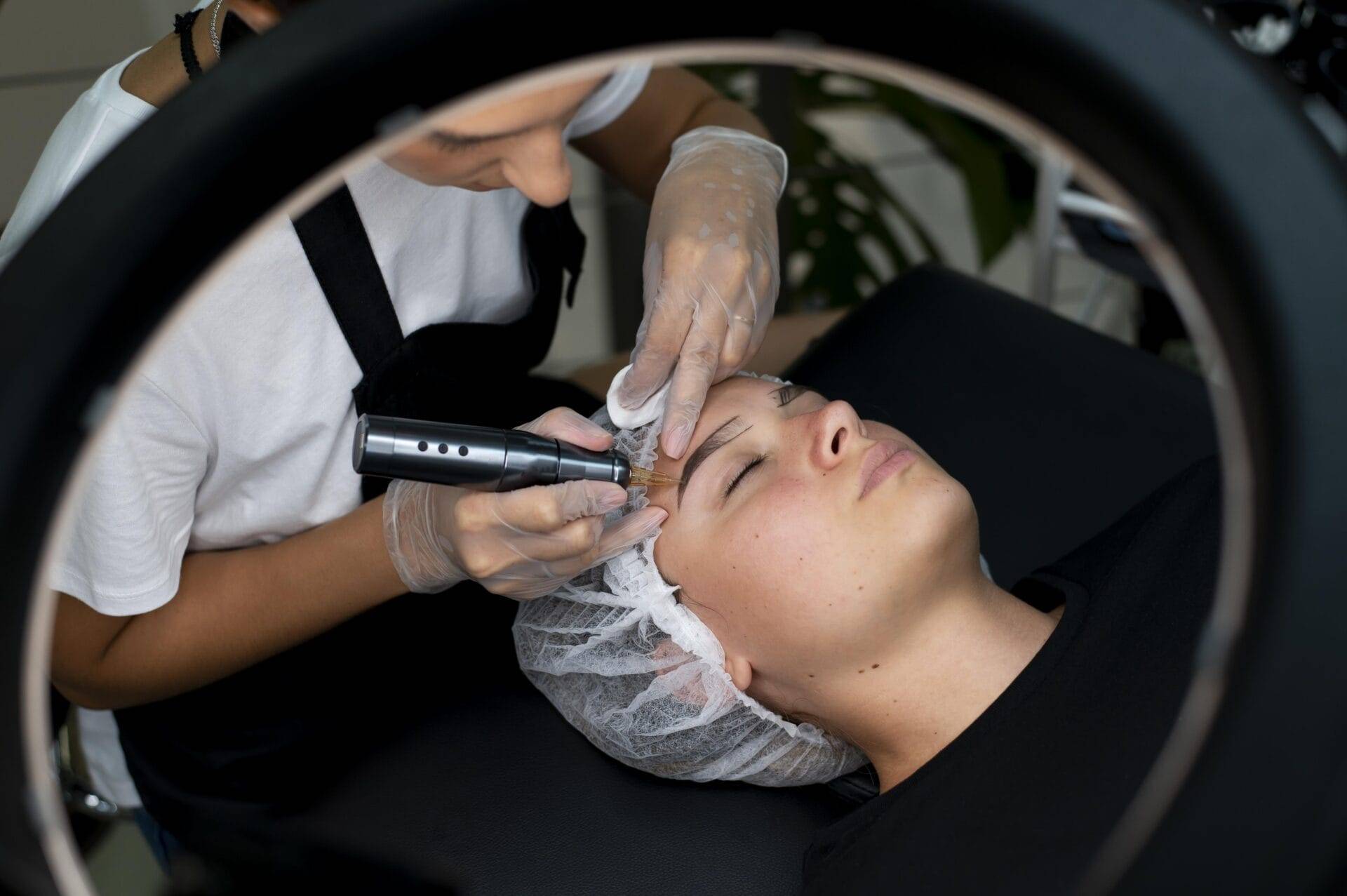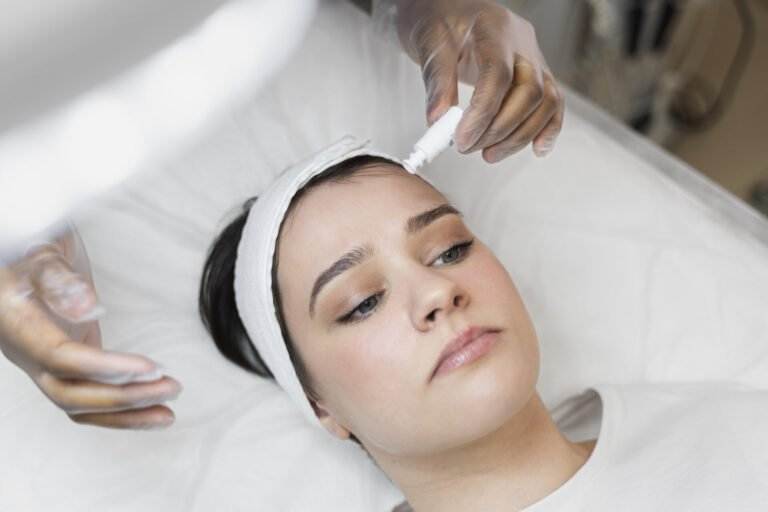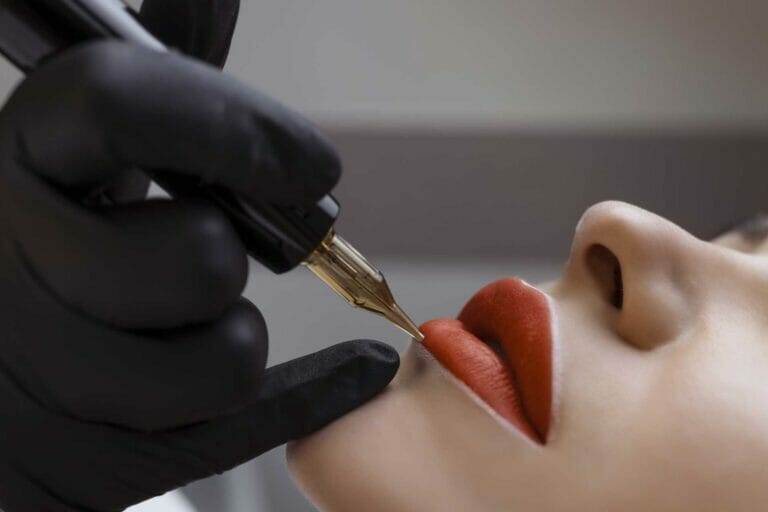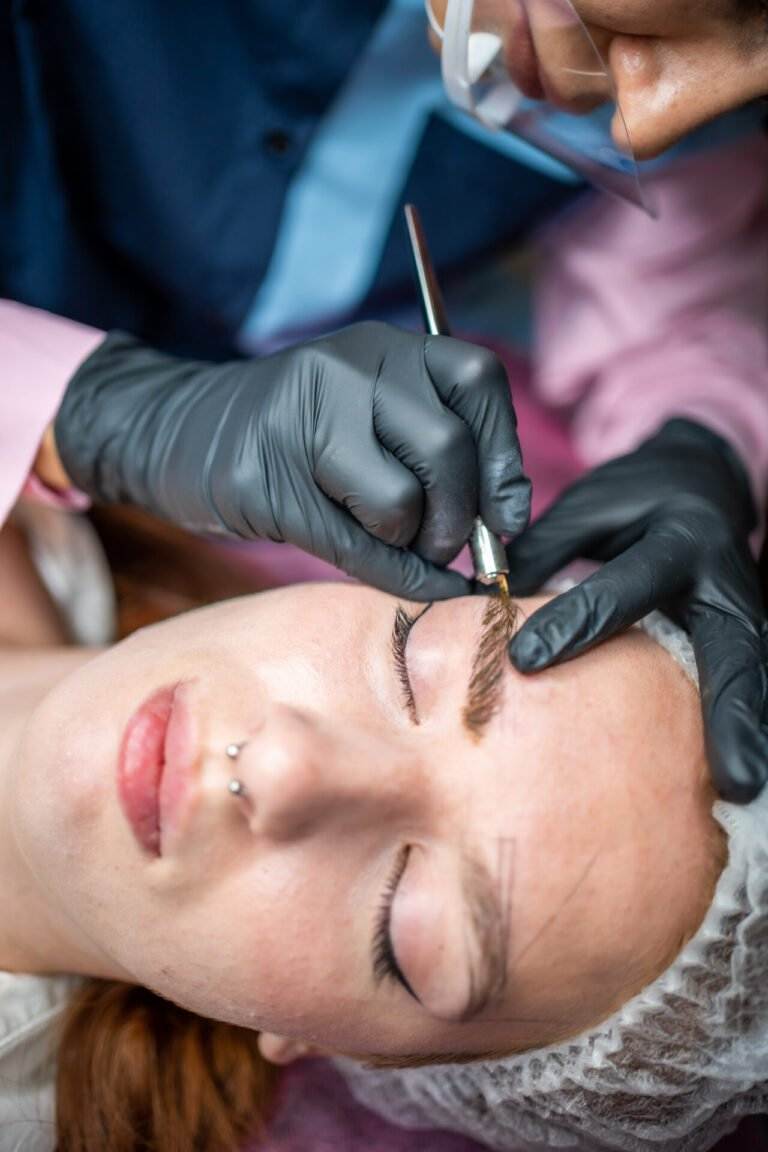Cosmetic tattooing, also known as permanent makeup or micropigmentation, is a form of tattooing that involves applying pigment to the skin to enhance features such as eyebrows, lips, and eyeliner. Unlike traditional tattoos, which are meant to be decorative or symbolic, cosmetic tattoos are designed to mimic the appearance of makeup. This can include filling in sparse eyebrows, adding color and definition to the lips, and creating a permanent eyeliner look.
The practice of cosmetic tattooing has a long history, dating back thousands of years. In ancient cultures such as Egypt and India, people would use natural pigments to enhance their features. However, it wasn’t until the late 20th century that cosmetic tattooing became more widely popularized. With advancements in technology and techniques, cosmetic tattooing has become a sought-after service for those looking to save time on their daily makeup routine or for individuals with medical conditions that affect their ability to apply makeup.
In recent years, cosmetic tattooing has gained even more popularity thanks to social media and celebrity endorsements. Many people are drawn to the idea of waking up with perfectly shaped eyebrows or having their lips always look full and vibrant. The convenience and long-lasting results of cosmetic tattooing have made it a desirable option for those seeking a more permanent solution to their beauty needs.
The role of artistry in cosmetic tattooing
Artistic skills play a crucial role in the field of cosmetic tattooing. Unlike traditional tattooing, which often focuses on bold lines and vibrant colors, cosmetic tattooing requires a more subtle and natural approach. The goal is to enhance the client’s features in a way that looks realistic and complements their overall appearance.
Cosmetic tattooing differs from traditional tattooing in several ways. Firstly, the pigments used in cosmetic tattooing are specifically formulated for use on the face and are designed to fade over time. This allows the tattooist to create a more natural-looking result that will gradually fade as the client’s skin naturally exfoliates. Additionally, cosmetic tattooing requires a high level of precision and attention to detail. The tattooist must have a keen eye for symmetry and be able to work with the contours of the face to create a harmonious and balanced result.
There are several artistic techniques used in cosmetic tattooing to achieve natural-looking results. For example, when creating eyebrow tattoos, the tattooist may use a technique called microblading, which involves using a handheld tool with tiny needles to create hair-like strokes. This technique mimics the appearance of natural eyebrow hairs and allows for a more realistic and three-dimensional look. Similarly, when creating lip tattoos, the tattooist may use a technique called lip blush, which involves shading the lips to create a soft and natural-looking color.
The importance of training and education in the field
One of the biggest risks in the field of cosmetic tattooing is the prevalence of untrained practitioners. Without proper training and education, these individuals may lack the necessary skills and knowledge to safely and effectively perform cosmetic tattooing procedures. This can lead to unsatisfactory results, infections, and other complications.
Formal training and certification are essential for anyone looking to become a cosmetic tattooist. Reputable training programs provide comprehensive instruction on topics such as anatomy, color theory, sterilization techniques, and client consultation. They also provide hands-on practice under the guidance of experienced instructors.
When choosing a training program, it is important to do thorough research and ensure that the program is accredited and recognized by industry organizations. The Society of Permanent Cosmetic Professionals (SPCP) is one such organization that provides certification for cosmetic tattooists who meet their rigorous standards.
There are also resources available for finding reputable training programs. The SPCP website has a directory of certified trainers who have met their standards of excellence. Additionally, attending industry conferences and trade shows can provide opportunities to network with experienced professionals and learn about the latest advancements in the field.
The different techniques and styles used in cosmetic tattooing
Cosmetic tattooing encompasses a wide range of techniques and styles, each designed to enhance different features of the face. Some of the most popular techniques include microblading, powder brows, lip blush, eyeliner tattooing, areola tattooing, and scar camouflage.
Microblading is a technique used to create natural-looking eyebrows. It involves using a handheld tool with tiny needles to create hair-like strokes that mimic the appearance of natural eyebrow hairs. This technique is ideal for individuals with sparse or thin eyebrows who want to achieve a fuller and more defined look.
Powder brows, on the other hand, involve shading the eyebrows to create a soft and powdery effect. This technique is suitable for individuals who prefer a more filled-in and defined look. It can also be used to correct asymmetrical or uneven eyebrows.
Lip blush is a technique used to add color and definition to the lips. It involves shading the lips to create a soft and natural-looking color. This technique is ideal for individuals who want to enhance the shape and color of their lips without the need for daily lipstick application.
Eyeliner tattooing is a technique used to create permanent eyeliner. It involves applying pigment along the lash line to enhance the appearance of the eyes. This technique is popular among individuals who have difficulty applying eyeliner or who want to achieve a more defined and dramatic look.
Areola tattooing is a technique used to recreate the appearance of nipples and areolas after breast reconstruction surgery. This technique can help restore confidence and femininity for individuals who have undergone mastectomies or other breast surgeries.
Scar camouflage is a technique used to conceal scars and make them less noticeable. It involves applying pigment to the scar tissue to match the surrounding skin tone. This technique can be used on scars from surgeries, accidents, or medical conditions.
The process of designing and creating a custom tattoo for a client
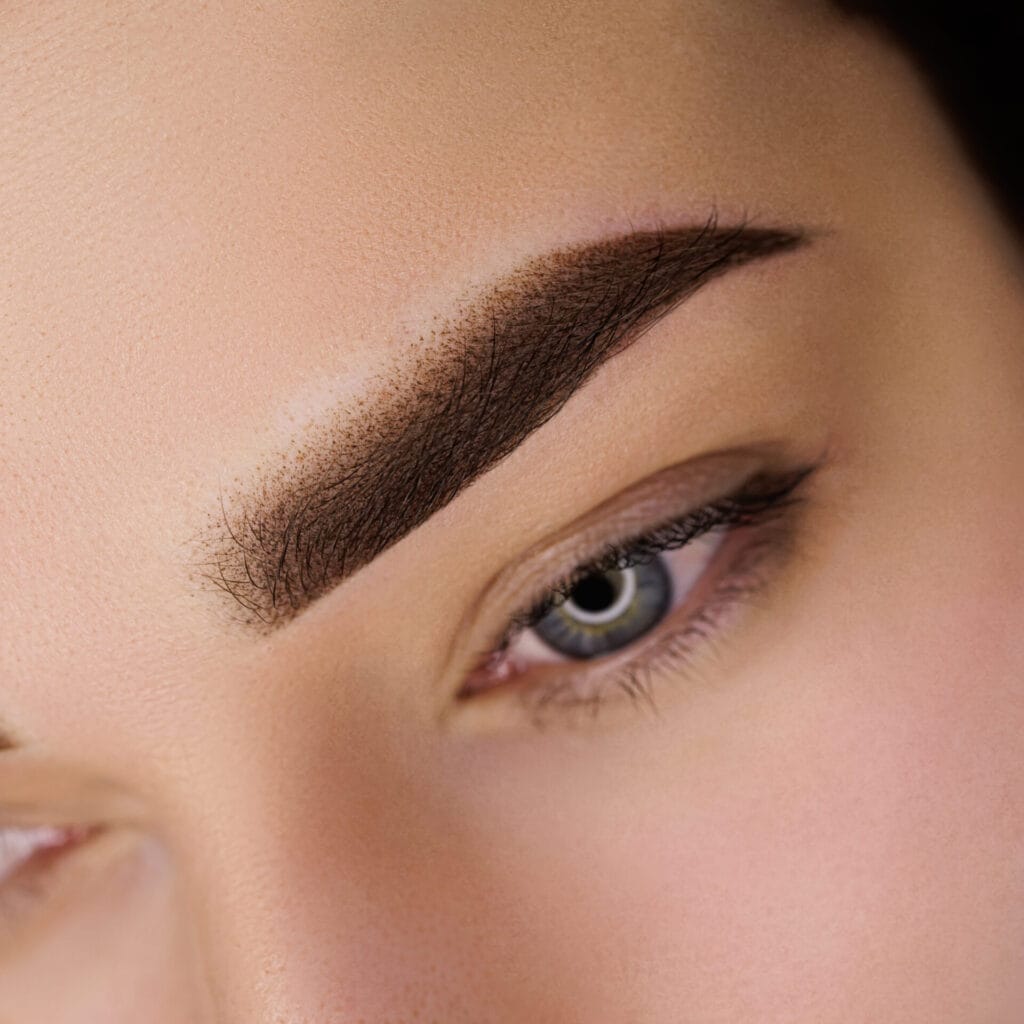
Designing and creating a custom tattoo for a client is a collaborative process that involves several steps. The first step is the consultation process, where the tattooist meets with the client to discuss their goals and expectations. During this consultation, the tattooist will assess the client’s skin type, facial features, and personal style to determine the best approach for their tattoo.
Understanding the client’s preferences and skin type is crucial in creating a custom tattoo that will meet their expectations. For example, individuals with oily skin may require a different technique or pigment than those with dry skin. Similarly, individuals with fair skin may require a lighter pigment to achieve a natural-looking result.
Once the consultation is complete, the tattooist will begin sketching and designing the tattoo. This involves taking measurements and creating a template that will guide the tattooing process. The tattooist will work closely with the client to ensure that the design meets their expectations and complements their features.
The actual tattooing process involves applying pigment to the skin using a handheld tool or machine. The tattooist will work slowly and methodically, layering the pigment to achieve the desired color and shape. Throughout the process, the client’s comfort and safety are of utmost importance, and the tattooist will take breaks as needed to ensure a positive experience.
The role of color theory in cosmetic tattooing
Color theory plays a crucial role in cosmetic tattooing. Understanding skin undertones and choosing the right pigment for each client is essential in achieving natural-looking results.
Skin undertones can be categorized into three main categories: warm, cool, and neutral. Warm undertones have yellow or golden hues, cool undertones have pink or blue hues, and neutral undertones have a mix of both. By identifying the client’s undertones, the tattooist can select a pigment that will complement their natural coloring and create a harmonious result.
Choosing the right pigment is also important in achieving the desired color and longevity of the tattoo. Pigments come in a wide range of colors and shades, and the tattooist must consider factors such as the client’s skin type, lifestyle, and personal preferences. For example, individuals with fair skin may require a lighter pigment to achieve a natural-looking result, while those with darker skin may require a darker pigment for the color to show up.
Color can also affect the final result of the tattoo. For example, warm colors such as reds and oranges tend to fade faster than cool colors such as blues and greens. Additionally, certain pigments may change color over time due to factors such as sun exposure or the client’s natural skin chemistry. The tattooist must take these factors into consideration when selecting pigments and managing client expectations.
The impact of technology on the field of cosmetic tattooing
Technology has had a significant impact on the field of cosmetic tattooing, leading to advancements in equipment and techniques. These advancements have allowed for even more precise and natural-looking results.
One of the most significant advancements in cosmetic tattooing is the rise of digital tattooing. Digital tattooing involves using a machine with a needle cartridge to apply pigment to the skin. This technique allows for greater control and precision, resulting in more realistic and long-lasting results. It also allows for faster healing times and less discomfort for the client.
Advancements in equipment have also led to improvements in safety and sterilization protocols. Disposable needle cartridges and single-use pigment containers help prevent cross-contamination and reduce the risk of infection. Additionally, digital machines often have built-in safety features such as adjustable needle depth and speed control, allowing for more customized treatments that cater to each client’s unique needs.
The potential for even more precise and natural-looking results is an exciting prospect for the field of cosmetic tattooing. As technology continues to evolve, we can expect to see further advancements in equipment and techniques that will push the boundaries of what is possible in the world of cosmetic tattooing.
The challenges and rewards of being a cosmetic tattooist
Being a cosmetic tattooist comes with its own set of challenges and rewards. On one hand, there is the emotional impact of helping clients feel more confident and empowered. Many individuals seek out cosmetic tattooing as a way to enhance their natural features or correct imperfections that may have affected their self-esteem. Being able to provide a solution that helps them feel more comfortable in their own skin can be incredibly rewarding.
On the other hand, being a cosmetic tattooist can be physically and mentally demanding. The job requires long hours of standing and focusing on intricate details. It also requires a high level of concentration and attention to detail, as even the smallest mistake can have a significant impact on the final result. Additionally, the job can be emotionally draining, as clients may have high expectations and may be dealing with their own insecurities or past traumas.
Ongoing education and self-care are essential for cosmetic tattooists to stay at the top of their game. The field is constantly evolving, with new techniques and trends emerging all the time. Attending workshops, conferences, and advanced training programs can help tattooists stay up-to-date with the latest advancements in the field. Additionally, taking care of one’s physical and mental well-being is crucial in maintaining a high level of performance and providing the best possible care for clients.
The ethical considerations of cosmetic tattooing
Ethical considerations play a significant role in the field of cosmetic tattooing. Informed consent is one of the most important ethical principles in any medical or aesthetic procedure. Clients must be fully informed about the risks, benefits, and alternatives of the procedure before giving their consent. This includes discussing potential complications, the healing process, and the expected outcome.
Sterilization and safety protocols are also crucial in ensuring the well-being of clients. Tattooists must follow strict guidelines for sterilizing equipment, disposing of single-use items, and maintaining a clean and hygienic workspace. This helps prevent the spread of infections and ensures that clients are receiving safe and high-quality care.
The responsibility of the practitioner to provide honest and realistic expectations is another important ethical consideration. Cosmetic tattooing is not a one-size-fits-all solution, and it is important for tattooists to be transparent about what can be achieved with the procedure. Managing client expectations and providing honest assessments of what is possible is essential in maintaining trust and ensuring client satisfaction.
The future of cosmetic tattooing and its potential for artistic innovation
The future of cosmetic tattooing holds great potential for artistic innovation. As the field continues to evolve, we can expect to see new techniques and styles emerge that push the boundaries of what is possible in terms of enhancing natural features.
One area of potential innovation is in the development of new techniques for creating even more realistic-looking results. For example, advancements in microblading tools may allow for even finer hair-like strokes, creating eyebrows that are virtually indistinguishable from natural hair. Similarly, advancements in lip blush techniques may allow for more precise shading and color blending, resulting in lips that appear naturally flushed and full.
The intersection of cosmetic tattooing and fine art is another area where we may see artistic innovation. Many cosmetic tattooists have backgrounds in fine art or design, and they bring their artistic skills and creativity to their work. As the field continues to gain recognition as a legitimate art form, we can expect to see more collaborations between cosmetic tattooists and fine artists, resulting in unique and innovative designs.
Social media also plays a significant role in shaping the industry. Platforms such as Instagram and YouTube have allowed cosmetic tattooists to showcase their work and reach a wider audience. This has led to increased awareness and interest in the field, as well as the sharing of techniques and trends. As social media continues to evolve, we can expect to see even more opportunities for artistic innovation and collaboration within the field of cosmetic tattooing.
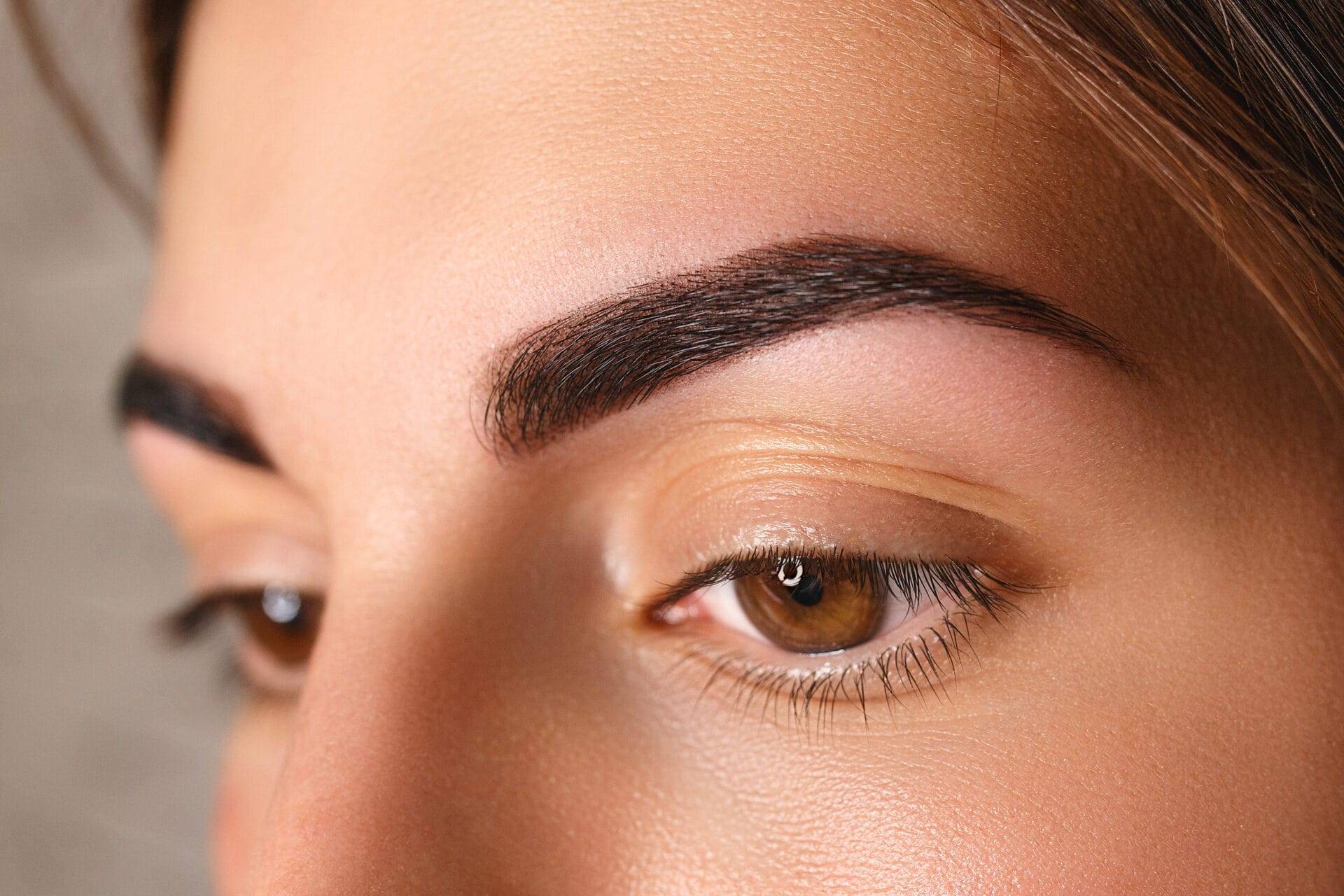
The artistry of cosmetic tattooing and its impact on self-expression and confidence.
In conclusion, cosmetic tattooing is a form of artistry that involves enhancing natural features through the application of pigment to the skin. The field has a long history and has gained popularity in recent years thanks to advancements in technology and techniques.
Artistic skills play a crucial role in achieving natural-looking results in cosmetic tattooing. The field differs from traditional tattooing in several ways, requiring a more subtle and realistic approach. Techniques such as microblading, powder brows, lip blush, and eyeliner tattooing are used to create custom tattoos that enhance the client’s features.
Training and education are essential for anyone looking to become a cosmetic tattooist. Reputable training programs provide comprehensive instruction on topics such as anatomy, color theory, and sterilization techniques. Resources such as the SPCP can help individuals find reputable training programs.
The future of cosmetic tattooing holds great potential for artistic innovation. Advancements in technology and techniques will continue to push the boundaries of what is possible in terms of enhancing natural features. The field also has the potential to empower clients and promote self-confidence by providing solutions that enhance their appearance. With the ability to create realistic and long-lasting results, cosmetic tattooing can offer individuals a sense of control over their own image. Whether it’s enhancing eyebrows, defining lips, or camouflaging scars, this form of artistry can help individuals feel more comfortable and confident in their own skin. Additionally, as the industry evolves, there is a growing focus on inclusivity and diversity, ensuring that cosmetic tattooing caters to a wide range of skin tones and features. This commitment to inclusivity will further empower clients by offering personalized solutions that celebrate their unique beauty. Overall, the future of cosmetic tattooing holds immense potential for artistic expression and self-empowerment, making it an exciting field to watch as it continues to evolve and innovate.

